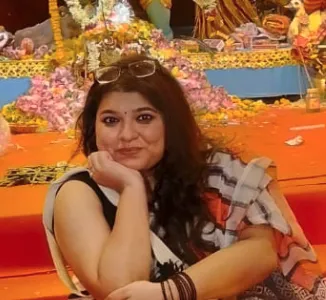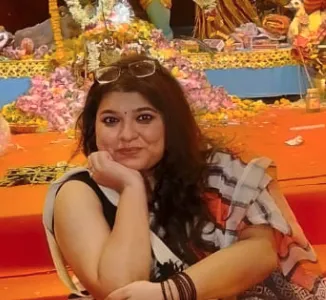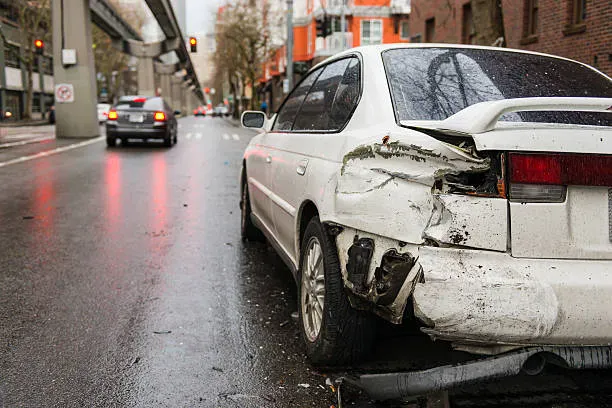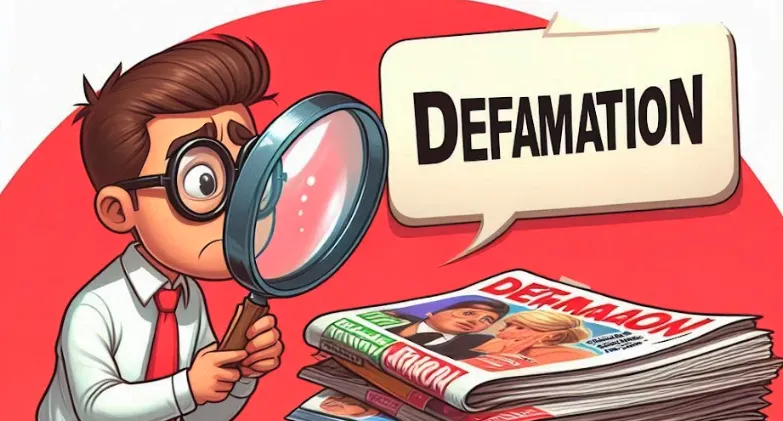Voting Process in India
“EVERY VOTE COUNTS”
All of us hear this on advertisements, radio shows, political campaigns, posters, etc. sometime before the date of the General or State Elections. Well, to be honest, voting and conversations about politics often become a source of mock debates and disapproval from the common people. Even if many people disagree, it is important not to forget how important the Right to Vote is. No matter the situation, we should always use our right to express our opinions through voting.
advertisement
So to remind ourselves about this fundamental right, let us explore the different types of elections held in India, the procedures and voter rights on polling day, the roles of polling booths and officers, and the use of Electronic Voting Machines (EVMs) and Voter Verified Paper Audit Trail (VVPAT).
In India, the right to vote is a fundamental aspect of democracy, as mentioned in various constitutional provisions. According to Article 326 of the Indian Constitution, every citizen of India who is 18 years of age or older has the right to vote in elections to the Lok Sabha and State Legislative Assemblies.
Article 15 of the Indian Constitution protects this right by preventing discrimination based on religion, race, caste, sex, or place of birth. It makes sure that everyone has equal access to voting rights.
Article 19 of the Indian Constitution guarantees the freedom of expression, which includes the right to participate in political processes and express political opinions. Article 243 of the Indian Constitution gives people the right to vote in local elections, like municipal and panchayat elections.
This allows citizens to take part in local administration. These rules make sure that voting is a basic right that is important for a democratic society.
Types of Elections in India
India's democratic structure includes various types of elections to represent the different levels of government. Here’s a detailed look at the main types of elections:
1. General Elections
Purpose: Every five years, the Indian parliament's lower house, the Lok Sabha, holds general elections to choose Members of Parliament (MPs).
Process: India is divided into 543 constituencies, each electing one MP. The group that gets the most seats in the election gets to form the government. The person who leads the group with the most seats becomes the Prime Minister.
Recent Developments: The elections were held in seven phases from April 19 to June 1, 2024. A total of 64.2 crore voters, including 31.2 crore women, participated in the elections. The counting of votes began on June 4, 2024, for 543 Lok Sabha seats and State Legislative Assemblies in Andhra Pradesh and Odisha.
advertisement
Key Results
-
National Democratic Alliance (NDA): The BJP led NDA secured 292 seats, therefore they did not get enough seats to have a clear majority. However, they are still the biggest group in the Lok Sabha. Prime Minister Narendra Modi, who won the Varanasi seat, is hopeful about forming the government again.
-
INDIA Bloc: The opposition group, led by the Congress party, won 234 seats. Rahul Gandhi had major wins in both Wayanad and Rae Bareli. Congress leaders, like Mallikarjun Kharge, saw these results as a sign that people are unhappy with Prime Minister Modi, mentioning problems like rising prices and poor governance.
-
Regional Dynamics: Various regional parties played crucial roles in their respective states. For instance, the TMC led by Mamata Banerjee made strong gains in West Bengal, while Nitish Kumar from JDU was suggested as a candidate for Prime Minister by some supporters.
-
Notable Leaders: Union Ministers like Piyush Goyal (Mumbai North) and Nitin Gadkari (Nagpur) maintained their leads. However, Shashi Tharoor of Congress lost against BJP's Rajeev Chandrasekhar in Thiruvananthapuram.
2. State Elections
Purpose: State Elections occur every five years to elect Members of the Legislative Assembly (MLAs) for each state and Union Territory with a legislature.
Process: Each state and Union Territory is divided into constituencies, each electing one MLA. The party or coalition with the majority forms the state government. The leader of the majority party becomes the Chief Minister of the state.
Recent Developments: Various states have held elections recently. For instance, the state elections in West Bengal and Tamil Nadu were conducted in 2021. The next round of state elections will take place as per each state’s election schedule.
advertisement
3. Local Elections
Purpose: Local elections are very important for managing and running smaller areas like towns or districts. These elections help elect representatives for Municipal Corporations, Municipalities, and Panchayats (village councils).
Types:
- Municipal Elections: For urban local bodies like Municipal Corporations and Municipalities.
- Panchayat Elections: For rural local bodies, including Gram Panchayats (village councils), Panchayat Samitis (blocklevel councils), and Zilla Parishads (districtlevel councils).
Process: Candidates are elected based on their local constituencies. The elected representatives work on local issues and development projects.
Recent update: The Congress party is preparing for the upcoming Tripura three tier panchayat body elections. They are allowing local leaders to decide on forming alliances with the Communist Party of India (Marxist), or CPI(M).
This gives regional leaders the freedom to choose alliances based on local politics. This decision shows the Congress party's plan to adjust to local needs and strengthen its position in these elections.

advertisement
Procedures and Voter Rights on Polling Day
On polling day, the voting process follows a set of procedures to ensure that every eligible voter can cast their vote freely and fairly. Here are the key steps and voter rights:
- Voter Identification: Voters must present a valid identification document at the polling station. The most common ID used is the Elector's Photo Identity Card (EPIC), also known as the Voter ID card.
- Polling Station: Voters must go to their designated polling station. Polling stations are usually set up in public buildings like schools and community halls.
- Checking Voter's List: Upon arrival, polling officers check the voter’s name against the electoral roll (voter list). If the name is found, the voter is allowed to proceed.
- Indelible Ink: To prevent multiple voting, indelible ink is applied to the voter’s finger.
- Casting the Vote: The voter is then directed to the Electronic Voting Machine (EVM) to cast their vote.
The Election Commission of India (ECI) is working hard to make the General Elections 2024 more inclusive and accessible. They want to ensure that every eligible voter can participate, regardless of any physical or other challenges they might face. This is a big move towards making the voting process fair and open to everyone.
Key Developments:
1. Home Voting Facility:
- For the first time in Indian elections, a home voting facility has been introduced.
- This service is available to senior citizens aged 85 and above and Persons with Disabilities (PwDs) who have at least 40% disability.
- This measure aims to help voters who cannot easily travel to polling stations.
advertisement
2. Voter Enthusiasm:
- After 6 phases of elections, there has been a strong response from various voter groups, including Persons with Disabilities, Senior Citizens, Transgenders, and Particularly Vulnerable Tribal Groups (PVTGs).
- These groups have shown significant enthusiasm and participation.
3. Statistics:
- There are over 81 lakh voters aged 85 and above.
- There are more than 90 lakh registered PwD voters across India.
- Voters eligible for home voting have already started using this facility in the first and second phases of the election.
4. Impact:
- The introduction of home voting represents a major advancement in making the election process more inclusive and accessible.
- It helps ensure that all eligible voters can participate in the democratic process, regardless of their physical limitations or other barriers.
Overall, these steps by the ECI reflect a commitment to enhancing voter participation and inclusivity in the electoral process.
Roles of Polling Booths and Officers
Polling booths and officers play crucial roles in the election process:
- Polling Booths: These are the locations where voters go to cast their votes. Each booth is managed to ensure orderly conduct during polling. Polling booths are designed to ensure privacy and secrecy of the vote.
- Polling Officers: Several officers manage each polling booth:
- Presiding Officer: Responsible for overall supervision of the polling station.
- Polling Officers: Assist the Presiding Officer and ensure smooth conduct of voting. They check voter IDs, apply indelible ink, and assist voters in casting their votes.
advertisement
Duties of Polling Officers:
- Ensure the polling station is set up correctly and all materials (like EVMs and voter lists) are in place.
- Verify voter identity and mark attendance on the electoral roll.
- Maintain order and handle any issues that arise, such as disputes or technical problems with the EVMs.
- Ensure that the polling process is conducted fairly and in accordance with the rules.
Use of Electronic Voting Machines (EVMs) and Voter Verified Paper Audit Trail (VVPAT)
India uses EVMs and VVPATs to conduct elections. These technologies have significantly improved the efficiency and transparency of the voting process.
1. Electronic Voting Machines (EVMs):
- Components: EVMs consist of two units: the Control Unit and the Ballot Unit. The Control Unit is operated by the polling officer, while the Ballot Unit is used by the voter.
- Operation: The voter presses the button next to the candidate's name and symbol on the Ballot Unit. This vote is recorded electronically in the Control Unit.
- Advantages: EVMs are user-friendly, reduce the time taken to cast and count votes, and minimise the chances of human error.
Recent update: Election Commission's New Protocol for EVM Verification
The Election Commission (EC) is introducing a new procedure called the mock poll protocol to ensure the accuracy and reliability of Electronic Voting Machines (EVMs) used in the recent Lok Sabha elections. Here’s what this means:
advertisement
Mock Poll Protocol:
- As part of the verification process, candidates will have the opportunity to cast up to 1,400 votes on selected EVMs.
- This mock voting will help verify the functioning and accuracy of the machines.
Supreme Court’s Ruling:
- On April 26, the Supreme Court rejected a request for 100% verification of Voter Verified Paper Audit Trail (VVPAT) slips against the EVM count.
- Instead, the Court directed the EC to seal and store Symbol Loading Units (SLUs) for 45 days after the election results are declared.
Symbol Loading Units (SLUs):
- SLUs are devices used to upload election symbols to the VVPAT machines.
- These SLUs will be examined in a manner similar to the EVMs to ensure their accuracy and proper functioning.
The purpose of this new mock poll process and the Supreme Court's guidance is to make the election process more transparent and reliable. This means that all voting machines and related equipment will be thoroughly checked and verified.
advertisement
2. Voter Verified Paper Audit Trail (VVPAT):
- Function: The VVPAT system generates a paper slip each time a vote is cast, which contains the name and symbol of the candidate selected. This slip is visible to the voter through a transparent window for about seven seconds before it drops into a sealed box.
- Purpose: VVPAT adds an additional layer of verification, allowing voters to confirm that their vote has been correctly recorded. It also provides a means for auditing and recounting votes if necessary.
- Procedure: After the voting ends, a random selection of VVPAT slips from a few booths is counted and matched with the electronic results to ensure accuracy.
Conclusion
India’s voting process is designed to ensure the principles of democracy are upheld through free, fair, and transparent elections. From the identification and voting procedures to the roles of polling booths and officers, every aspect is carefully regulated. The use of EVMs and VVPATs further enhances the credibility and efficiency of the process. Understanding these procedures and rights helps voters participate confidently and responsibly in the democratic process.
Frequently asked questions (FAQs)
1. What is the importance of voting in India?
Voting is a fundamental right and responsibility of every citizen in India. It is essential for upholding democracy, as it allows citizens to elect their representatives and participate in the decision making process of the country. Voting ensures that every individual’s voice is heard in shaping the nation's governance.
advertisement
2. What are the different types of elections held in India?
India conducts several types of elections:
- General Elections: Held every five years to elect Members of Parliament (MPs) to the Lok Sabha.
- State Elections: Held every five years to elect Members of the Legislative Assembly (MLAs) for each state and Union Territory.
- Local Elections: Elect representatives for local bodies like Municipal Corporations, Municipalities, and Panchayats (village councils).
3. How do Electronic Voting Machines (EVMs) work?
EVMs are like voting machines with two parts: the Control Unit and the Ballot Unit. When you vote, you press a button next to your favorite candidate's name and symbol on the Ballot Unit. Your vote is then electronically stored in the Control Unit, which makes counting votes way easier and more accurate.
4. What is Voter Verified Paper Audit Trail (VVPAT)?
VVPAT is a system that generates a paper slip each time a vote is cast, showing the name and symbol of the selected candidate. This slip is visible to the voter for a few seconds before dropping into a sealed box, providing a means for verifying and auditing votes.
5. What are the key results of the recent General Elections?
In the recent General Elections, the National Democratic Alliance (NDA) secured 292 seats, while the opposition INDIA Bloc won 234 seats. Various regional parties also made significant gains, influencing the overall political landscape.
advertisement
REFERENCES:
- Lok Sabha Election Results 2024 Highlights
- National Democratic Alliance
- Lok Sabha: Which parties are members of the INDIA bloc & the seats they won
- India Trinamool Congress
- What is Janata Dal United?
- Congress gears up for three tier panchayat body polls, says local leaders will decide on alliance with CPI(M)
- Home Voting for eligible voters extended pan India for the first time in General Elections 2024
- Election Commission to conduct mock polls to check EVMs post LS polls
- Supreme Court Judgement 26 April 2024

Written by Seersha Chaudhuri
Driven legal professional with a BA LLB and a knack for writing and media reporting. Previously, I’ve crafted legal documents and managed court proceedings at Terkiana PC, focusing on immigration law. I’m also brushing up on my Spanish with Duolingo—learning a new language has never been this fun! Eager to blend my expertise in legal research with my passion for global policy and creative writing. Apart from being a professional, I am a full time lover of fish, dystopian fiction and Brooklyn 99.
advertisement
Further Reading
advertisement






